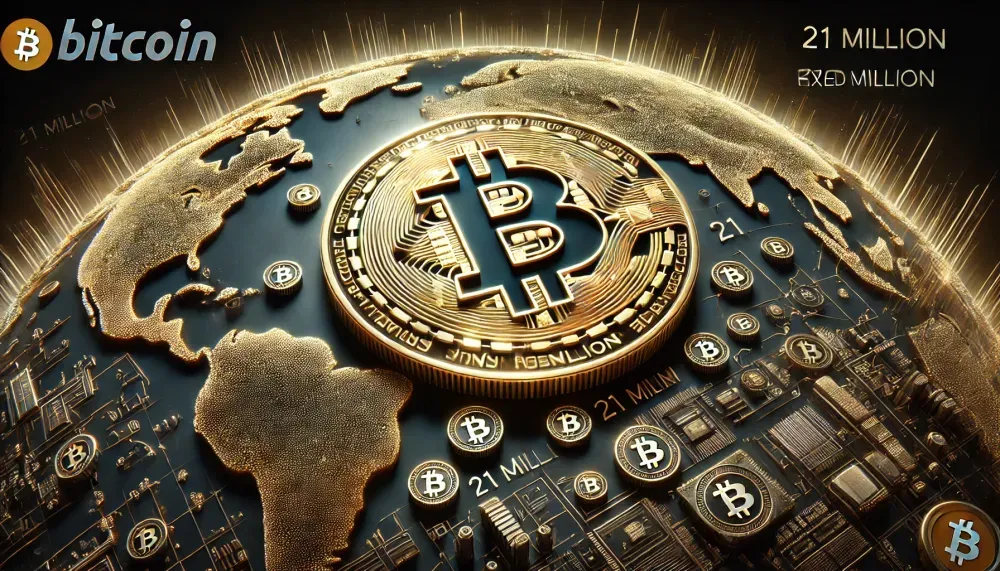Bitcoin’s Maximum Supply: Why 21 Million and Not Another Number?

Bitcoin has a unique monetary policy that sets it apart from traditional currencies: its supply is capped at 21 million BTC. This means that only 21 million bitcoins will ever exist, and once they’re mined, no more can be created. But why did Satoshi Nakamoto, the creator of Bitcoin, choose this number? In this article, we’ll explore the reasoning behind Bitcoin’s fixed supply limit and why 21 million was chosen rather than any other number.
The Concept of a Fixed Supply
One of the foundational aspects of Bitcoin is its fixed supply. This cap creates a scarcity similar to that of precious metals, especially gold, earning Bitcoin the title of "digital gold." In contrast to fiat currencies, which can be printed in unlimited quantities by central banks, Bitcoin's supply limit prevents inflation from devaluing the currency over time. The idea is to create a deflationary asset that holds and potentially increases its value over time.
The maximum supply of Bitcoin is hardcoded in its protocol, making it one of the first currencies with a strict, transparent, and predictable issuance schedule. Bitcoin’s supply cap can only be changed if a vast majority of the network’s participants agree — which is extremely unlikely due to Bitcoin's decentralized nature and the community's emphasis on maintaining this core principle.
Why 21 Million Bitcoins?
While we can’t be certain of Satoshi Nakamoto’s exact reasoning, there are several theories and technical explanations for why 21 million BTC was chosen as the cap.
1. Simulating Scarcity and Value Like Gold
Bitcoin’s supply cap mimics the scarcity of precious metals. Just as there is only a finite amount of gold in the Earth’s crust, Bitcoin has a finite supply. By creating a capped supply, Bitcoin’s value is theoretically preserved through scarcity, similar to how gold’s rarity contributes to its status as a store of value.
2. Mathematics and Block Rewards
Bitcoin’s monetary policy is structured around the “block reward halving.” Bitcoin miners are rewarded with new bitcoins each time they add a new block to the blockchain. However, this reward is halved every 210,000 blocks, roughly every four years. The reward began at 50 BTC per block in 2009, then halved to 25 BTC in 2012, 12.5 BTC in 2016, and so on. This process will continue until the reward becomes negligible around the year 2140.
Given the starting reward of 50 BTC, the intervals of 210,000 blocks, and the halving schedule, 21 million is the closest round number achievable based on Bitcoin's reward structure. The choice of 21 million BTC is, therefore, a product of the design of the block reward and halving process, which naturally converges toward this number.
3. Avoiding Hyperinflation
By setting a hard limit, Bitcoin’s design avoids the possibility of hyperinflation, which occurs when an asset's supply increases uncontrollably, devaluing it rapidly. Many fiat currencies have suffered from hyperinflation in history due to unlimited printing by central authorities. Satoshi likely aimed to counter this flaw by setting a predictable supply.
4. Binary and Computational Efficiency
Another explanation is rooted in the binary structure of computers. Bitcoin's issuance schedule works well in binary terms and computational efficiency. The block reward halving every 210,000 blocks is a factor of two, a crucial concept in binary systems. This made the 21 million BTC cap convenient and practical for computational purposes within Bitcoin’s protocol.
5. Ideal Monetary Unit with Limited Divisibility
Satoshi Nakamoto might have also considered the divisibility of Bitcoin. Each BTC can be divided into 100 million satoshis, allowing for 2.1 quadrillion units. This level of divisibility ensures Bitcoin can scale as a global currency even if the value per BTC rises significantly. With a total of 21 million BTC, each satoshi (0.00000001 BTC) represents the smallest unit of the currency, ensuring users can transact with tiny fractions if Bitcoin's value continues to increase.
Benefits of a Capped Supply
Bitcoin’s supply limit is fundamental to its value proposition as “sound money.” Here are some reasons why this feature is beneficial:
- Deflationary Nature: Bitcoin's capped supply means it is inherently deflationary, as coins become scarcer over time. This can drive demand, making it appealing to investors seeking long-term store-of-value assets.
- Predictability and Transparency: Bitcoin’s issuance is transparent and follows a predetermined schedule. This contrasts with fiat currencies, where monetary policy decisions are often made by centralized authorities without public transparency.
- Protection from Manipulation: A fixed supply means no central authority can alter Bitcoin's supply to suit its interests. This makes Bitcoin immune to the inflationary policies that can erode the value of traditional currencies over time.
- Global Accessibility and Fairness: Bitcoin’s scarcity is built-in and universally acknowledged. It applies equally to everyone worldwide, promoting fairness in monetary policy.
What Happens When All 21 Million Bitcoins Are Mined?
Bitcoin’s final supply of 21 million BTC is expected to be fully mined by the year 2140. After this point, miners will no longer receive BTC as block rewards. Instead, they will be compensated through transaction fees. This shift is designed to ensure that the Bitcoin network remains secure, even without new bitcoins being minted.
As mining rewards decrease over time, transaction fees are expected to play a more significant role in incentivizing miners to maintain the network. This transition depends on Bitcoin's adoption and transaction volume, which would ideally be enough to sustain miners solely on transaction fees.
In Summary: Why 21 Million?
The 21 million BTC supply cap was a deliberate choice by Satoshi Nakamoto. While we may never know his exact reasoning, this cap aligns with Bitcoin’s goal of being a decentralized, deflationary, and transparent form of money. By limiting the supply, Satoshi created a scarce digital asset that is increasingly sought after as a store of value.
The capped supply has not only distinguished Bitcoin from traditional fiat currencies but has also reinforced its position as a secure, valuable, and independent alternative. In essence, 21 million BTC represents not just a number, but a fundamental principle that ensures Bitcoin remains decentralized, scarce, and protected from the inflationary pressures seen in traditional monetary systems.
This article presented by Loka Mining.
Loka is revolutionizing the Bitcoin mining ecosystem by directly connecting investors with Bitcoin miners through a decentralized mining pool and an upcoming permissionless forward hashrate marketplace protocol.
Loka enables investors to get Bitcoin at lower than market price without centralized & counter-party risks, and Bitcoin miners to access capital efficient financing and hedge their risk exposure by selling their future mining rewards.
Find out more about loka in https://lokamining.com — or access our mining pool aggregator on https://pool.lokamining.com





